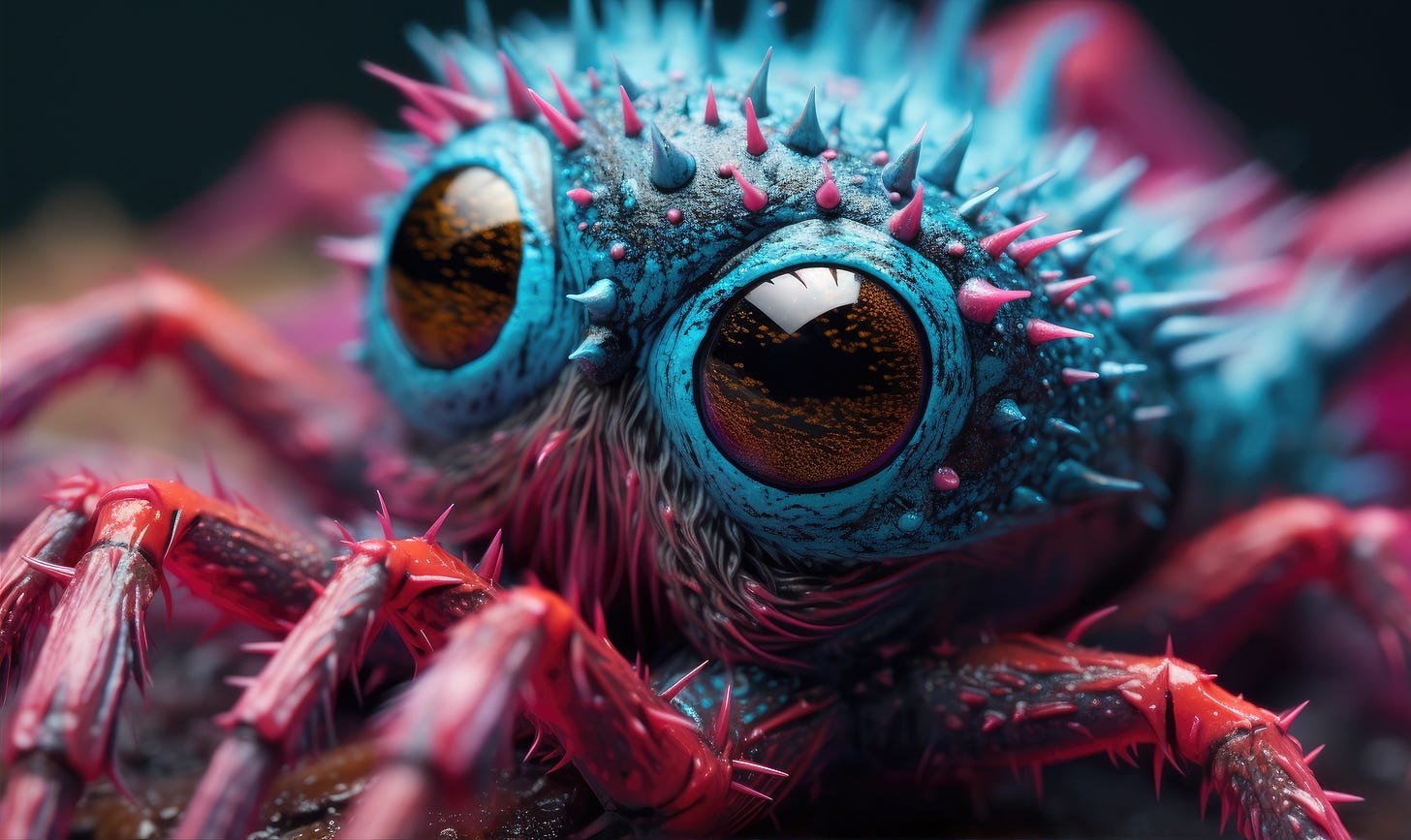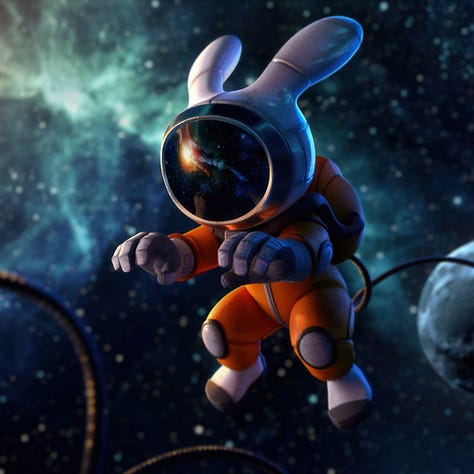Creating majestic, sweeping exterior environments is one of the great joys of being a 3D Artist. But conveying scale and depth across miles of virtual terrain is not easy. It requires artists to draw on core techniques that exploit the quirks of human visual perception. If you’re not careful, you can end up with a scene that just looks “CG.” So here are some tips for making your world appear vast.
Scale References
The first and easiest way to convey scale in your environment is to include a known object in the scene. A human. A car. A banana. The audience can latch on to something of known size as they navigate the space.
Speaking of space, the moon is a great place to look for reference for this. Since there is no atmosphere on the moon, there are few of the other visual clues to guide so we are solely reliant on other objects to guide us. As you would expect, you are grasping at straws if you have no known objects in the scene.
Take a look at this image…I ask you how big is that crater in the lower right portion of the picture? Is that the size of a pothole or the Grand Canyon? We have no idea if that spacecraft is human-sized or some nanobot because it is foreign to all of us non-astronauts out there. Other than the moon's curvature telling us it’s pretty big, we have no idea of scale here.
Compare that to this image; we are better calibrated by adding the astronaut and human-sized vehicle. This isn’t perfect, but we have a better sense of the space.
Aerial Perspective
Besides adding other objects in the image, the most essential weapon in their arsenal of communicating vast space in environments is aerial perspective. Aerial perspective, or atmospheric perspective, is the perception of objects changing appearance as they fall back into space. They lose detail around the edges and internally, become less saturated, and lose contrast as they recede from the camera. This atmospheric presence is caused by moisture and particles in the air scattering light as it passes. Depending on the wavelength of the light, the scattering of light will vary. Blue light fades away the slowest and, therefore, objects will generally shift toward cooler tones as they fall back into space.
Aerial perspective has been analyzed and duplicated in painting for hundreds of years. Although the practice of creating aerial perspective was long established, Leonardo da Vinci was the first to use the term and wrote about it in Treatise on Painting, “Colors become weaker in proportion to their distance from the person who is looking at them.”
Whether I’m looking at a painting, a photograph, or just looking out over a landscape, I tend to count back into space to help me understand the depth values.
Animated films will also artistically craft aerial perspective to adapt it to a particular aesthetic. This was especially true of the early Disney features like Bambi, which often used stunning, colorful, abstract backgrounds with dense atmospherics to keep the attention on the characters. Look at this film still and notice not just that the background is abstract, but how it is abstracted in a way that draws attention to the characters. Behind Bambi is darker, cooler greens to allow his brighter, warmer values to pop forward. Then shift to the possums that are positioned over a lighter background so their dark values read through.
This is a great example of in stylized work, you don’t necessarily have to use aerial perspective literally to get the desired result.
Vertical Variation
In scenes with large objects like mountains or skyscrapers, it is important also to create vertical variation. Vertical variation is the subtle shift in light, color, or value as you move along a vertical object. Very small objects will not have much vertical variation since there isn’t much space for that. Large objects will almost certainly have some form of variation and viewers will definitely notice if it isn’t present in your image.
Gobos
The term “gobo” comes from photography and theatrical lighting and is short for “go between optics.” They can also be called “cookies” since they were often metal plates placed over light sources that looked like cookie sheets. The role of a gobo is to cast a color or shadow onto a scene to imply off-camera objects or elements. These shadows can both expand the world to the audience outside of just what’s on frame and help create more of that sought after variation.
Wide swaths of land in CG scenes can often appear very even and boring. Just some repeated rocks and trees and one sunlight shining evenly, hitting every object in the scene.
Using gobo lighting to simulate clouds in the sky and to break up the illumination of a vast landscape is a common practice. These cloud patches will trigger a scale reference in our brains. The more light variation on a particular object, the larger it usually appears. Once again, let’s look at the moon for an object with almost no value breakups.
Balancing Black Points
This is similar to aerial perspective but understanding this concept played a huge part in advancing my own work so I thought I would emphasize it. The artist must take special consideration regarding the black points on an environment. Black points refer to the spot that is the absolute darkest. That darkest area is referred to as the black point of that image or region of the image.
The simple concept to remember is that the black point is darkest close to the camera and gets slightly lifted as you move back into space. Black points in distant background objects that are too black can jump off an image and right into face of the viewer. This will break the illusion of depth and space and can be problematic. The key is to always keep the blackest blacks closer to camera and let the values become slightly lifted as they fall back into space.
Interested in more on black points? Check out my full article here:
Depth of Field
To keep it short, normally you can only get heavy depth of field blur in a small space. So if you are trying to convey a large landscape, don’t make the background extremely out of focus because it will trigger a reaction in the audience that will naturally cause them to think the space is very small.

I covered camera lenses and depth of field in this newsletter so feel free dive a little deeper if you are interested:
Conclusion
With these core tricks – aerial perspective, gobo lighting, god rays, and black point balancing – animators breathe life and scale into even the grandest outdoor scenes. Subtly manipulating how light reveals the land, they guide the viewer’s eye through sweeping master shots and draw focus to hero characters against stunning vistas. So next time you watch a majestic animated adventure or escape into an exotic virtual ecosystem, appreciate the sweat, craft, and visual wizardry that surely built its enchanting lighting!
3D News of the Week
Would you believe a VR headset outsold AirPods during Black Friday? It happened - ZDNet
CGSociety permanently shutting down on January 8th - Reddit
An Artist Shows How You Can Fake a Waterfall in Blender - 80.lv
LooseControl was just released and it's so good - Twitter
A Record 33 Animated Features Are In This Year’s Oscar Race - Cartoon Brew
3D Merch is here!
Click here to Get Your 3D Artist Swag!
Amazing 3D Artist Available for Work









Want to be featured!?!?! Submit your work here
3D Tutorials
3D Job Spreadsheet
Link to Google Doc With A TON of Jobs in Animation (not operated by me)
Hello! Michael Tanzillo here. I am the Head of Technical Artists with the Substance 3D Growth team at Adobe. Previously, I was a Senior Artist on animated films at Blue Sky Studios/Disney with credits including three Ice Age movies, two Rios, Peanuts, Ferdinand, Spies in Disguise, and Epic.
In addition to his work as an artist, I am the Co-Author of the book Lighting for Animation: The Visual Art of Storytelling and the Co-Founder of The Academy of Animated Art, an online school that has helped hundreds of artists around the world begin careers in Animation, Visual Effects, and Digital Imaging. I also created The3DArtist.Community and this newsletter.
www.michaeltanzillo.com
Free 3D Tutorials on the Michael Tanzillo YouTube Channel
Thanks for reading The 3D Artist! Subscribe for free to receive new posts and support my work. All views and opinions are my own!



















